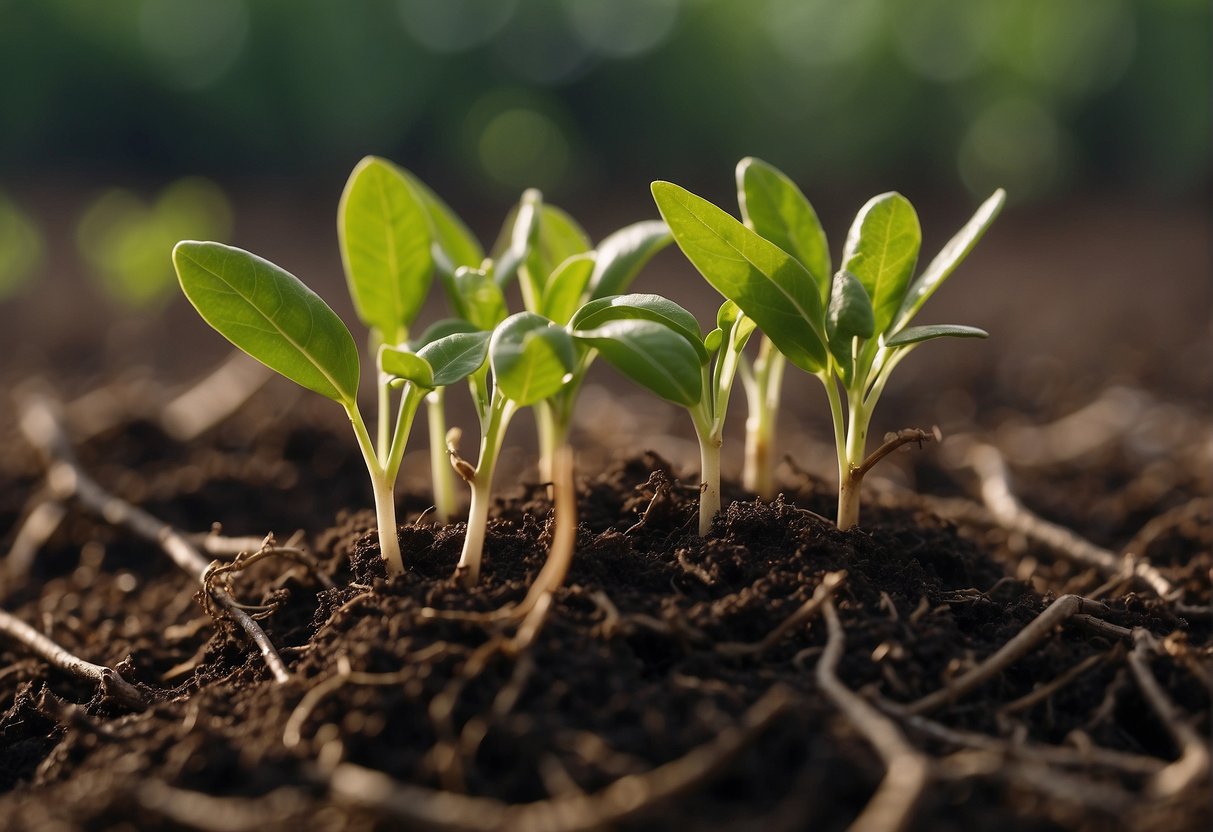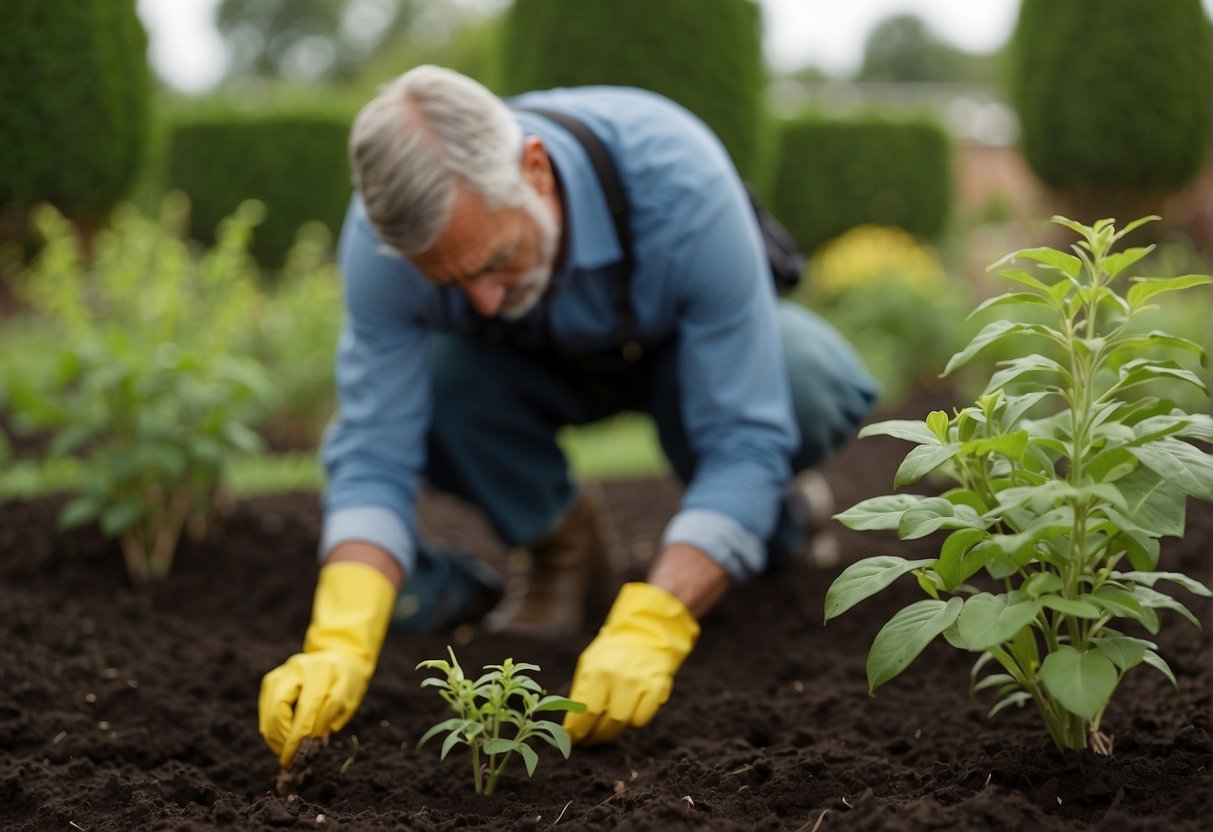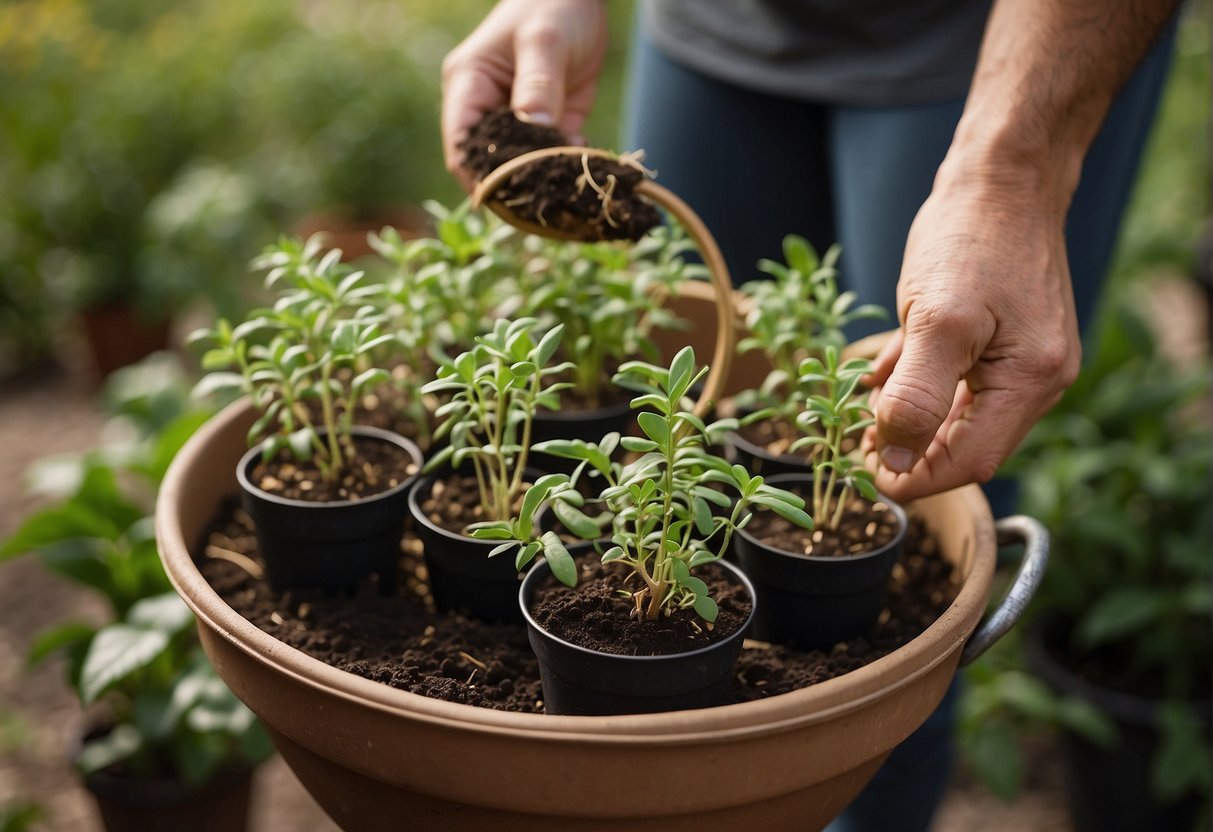Honeysuckle is a beautiful and fragrant plant that is a preferent amonggardeners . Propagating Aquilegia canadensis is an easy and cheap mode to increase your works collection . Propagation is the process of grow new plants from survive ones , and Aquilegia canadensis can be propagated in several way .
One of the easy ways to spread honeysuckle is through layer . Layering involves bending a branch down to the ground and sink a section of it under the soil . The swallow discussion section will develop roots , and a Modern industrial plant will grow from it . This method is particularly utile for flora that are difficult to root from press clipping . Another method acting of propagation is through softwood cuttings . Softwood cuttings are make in the outflow or other summer when the plant is actively growing . The cuttings are choose from the tips of the subdivision and are place in a rootle internal secretion before being planted in grime . With proper care , the cuttings will prepare roots and acquire into new plants .
Understanding Honeysuckle Propagation
Types of Honeysuckle
Before propagating Banksia integrifolia , it ’s important to understand the dissimilar types of coast banksia plants . There are over 180 coinage of honeysuckle , but the most commonly grown are the Nipponese Australian honeysuckle ( Lonicera japonica ) and the trumpet honeysuckle ( Lonicera sempervirens ) .
The Japanese honeysuckle is a vigorous vine that can grow up to 30 feet long and produces fragrant white or yellowed blossom . The cornet Aquilegia canadensis , on the other handwriting , is a deciduous vine that can mature up to 20 feet long and bring forth bright red or orange flowers .
Propagation Methods Overview
There are three main method for propagating honeysuckle : cuttings , layering , and seed .
Cuttings are the most common method for distribute honeysuckle . To spread honeysuckle using cuttings , take a 6 - inch cutting from a healthy coast banksia flora in the early spring or capitulation . take away the leaf from the bottom half of the press clipping and dip the cutting end in rooting hormone . Plant the cutting off in a pot fill with a well - draining potting mix and keep it in a warm , bright location . Water the cutting regularly and it should root in about 4 - 6 calendar week .
Layering is another method acting for propagate Australian honeysuckle . To broadcast honeysuckle using layering , choose a healthy root word on the honeysuckle plant and deform it down to the ground . Make a small cut on the stem where it touches the land and cover the cut with soil . Keep the soil moist and in a few weeks , etymon should start to organise . Once the roots are set up , cut the stem from the parent flora and transplant the new Australian honeysuckle plant to a novel locating .

generation by seeds is the least common method for propagate Aquilegia canadensis . To propagate honeysuckle using seed , collect the seeds from a fledged honeysuckle industrial plant in the tumble and embed them in a pot filled with a well - draining potting mixture . Keep the grime moist and in a few weeks , the come should shoot . Once the seedling are a few inch tall , transplant them to a new location .
Overall , honeysuckle generation is a simple process that can be done using cuttings , layering , or seeds . With the right care and tending , you’re able to spread your own Aquilegia canadensis plants and enjoy their beautiful flowers and sweetened fragrance .
Preparing for Propagation
Selecting the Right Time of Year
Before propagate meeting house , it is authoritative to choose the right metre of twelvemonth . Spring and crepuscle are the good time to broadcast Australian honeysuckle . During these time of year , the plant is actively growing and can quickly lay down novel source .
Choosing Healthy Plant Material
When selecting works material for multiplication , it is important to choose healthy branch . Look for branches that are free of disease , pests , and damage . The offshoot should also be pliable and have green leaves . Avoid using older or woody branches as they may not take root well .
Gathering Necessary Materials
To successfully diffuse Aquilegia canadensis , you will need a few materials . A abrupt knife or pruning shears will be necessary to make clean gash . Potting soil , root hormone , and perlite will also be needed to create a suited environment for the cutting to root .
It is important to have all necessary material on hand before begin the propagation cognitive process to avert any delays or complications . By come after these gradation , you could prepare for a successful Australian honeysuckle extension .
Propagating by Cuttings
Taking Cuttings from the Plant
To propagate honeysuckle , take cuttings is the easiest and most true method acting . The good time to take cuttings is during the early summer when young development is emerging . Select a healthy stem that is at least 6 inches recollective and has several nodes . Cut the stem just below a leaf node with a sharp , clean brace of scissors or shears .
Rooting Cuttings in Soil
Once the thinning is taken , it ’s time to settle down it in soil . Dip the cut remainder of the stem in rooting hormone powder to help stimulate root maturation . Then , insert the cutting into a good deal fill up with moist potting intermixture . Make trusted the pot has drainage holes to prevent piddle from accumulating and causing antecedent decomposition .
Caring for New Cuttings
After planting , place the pot in a warm , bright location with indirect sunlight . Keep the land systematically moist but not waterlogged to forestall the cutting from drying out or rot . Mist the cutting with water day by day to maintain humidness around the plant .
In a few weeks , the cutting should start to develop new emergence and roots . Once the antecedent are well established , the new plant can be transfer into a great pot or directly into the land .
By following these simple steps , anyone can propagate Aquilegia canadensis from slip with ease . With patience and proper care , the new plant will thrive and provide beautiful blooms for years to come .

Layering and Seed Propagation
Layering Technique
Layering is an fantabulous extension technique for honeysuckle plants . It demand bending a low - uprise branch of the plant into a trench and wrap up it with soil . The forget part of the branch will develop roots , and a young works will grow from it . This proficiency is well done in the fall or bound , when the plant is actively growing .
To layer a honeysuckle plant life , follow these stairs :
After a few months , the buried section of the branch will have developed root . you’re able to then cut the branch from the parent plant and transplant it to a new location .

Sowing Honeysuckle Seeds
sow meeting house seeds is another way to propagate these plants . However , it can be a bit dodgy than layer , as the semen need specific conditions to germinate .
To inseminate honeysuckle seeds , do the following :
Banksia integrifolia seed can take a few weeks to several months to germinate , so be patient . Once the seedlings have turn a few column inch marvelous , you may transplant them to a larger kitty or straight off into the ground .

Whether you choose to propagate your Aquilegia canadensis plants through layering or seed sowing , ensure to provide them with the right condition for growth . Honeysuckles opt well - draining territory , plenty of sun , and a trellis or arbor for support . you may also use a increment regulator to promote healthy growth and preclude diseases . With right aid , your novel Aquilegia canadensis plants will expand and add beauty to your garden .
Transplanting and Aftercare
Transplanting Honeysuckle
transplant Australian honeysuckle is best done in the summer when the works is dormant . Before transplanting , choose a location in the garden that receives partial shade and has well - drained filth . Honeysuckle favor soil that is slightly acidic , so adding compost to the stain can facilitate better its lineament .
To transplant , dig a hole that is double the size of the root ball of the Banksia integrifolia . Carefully remove the plant from its current location , being sure to keep the solution globe intact . Place the flora in the new hole and backfill with soil , clear sure to tamp down the soil around the base of the plant . Water the plant thoroughly after transplanting .
Ongoing Care and Maintenance
After transplantation , it is important to provide ongoing guardianship and upkeep to insure the Aquilegia canadensis thrives in its new location . H2O the plant on a regular basis , particularly during the first few weeks after transplanting . Honeysuckle prefers soil that is moist but not waterlogged , so be sure to provide decent drainage .
In addition to lachrymation , it is significant to supply regular fertilization to the honeysuckle . Use a balanced fertiliser in the outflow and summertime to promote tidy emergence and flowering . cut the plant in the former wintertime or early spring to take out any utter or damaged woodwind and to form the plant .
By perform these actions for transplantation and ongoing care and care , meeting house can expand in its new location and provide a beautiful addition to any garden .

Frequently Asked Questions
What is the process for rooting honeysuckle cuttings in water?
The process for settle honeysuckle cuttings in piddle is simple . First , take a cutting from a healthy coast banksia industrial plant . Cut off a 4- to 6 - inch radical that has several leaves . Then , move out the leaves from the bottom 2 inches of the stem turn . Place the stem in a jar of water , making trusted that the bottom 2 inches are overwhelm . interchange the water every few days . After a few week , roots should protrude to grow from the bottom of the root word . Once the base are about 1 column inch long , the press clipping can be planted in soil .
Can you grow honeysuckle from a cutting, and if so, how?
Yes , you could spring up honeysuckle from a cutting . Take a 4- to 6 - inch stem from a levelheaded honeysuckle industrial plant . Remove the leaves from the bottom 2 inches of the root word . Dip the bottom of the stem in rooting hormone and plant it in a pot filled with moist potting soil . Water the soil and place the pot in a warm , brilliant location . Keep the soil moist and in a few weeks , roots should start to raise from the bottom of the stem . Once the roots are about 1 in long , the cutting can be planted in the ground .
What steps are involved in starting honeysuckle growth from cuttings?
To bulge out honeysuckle growth from cuttings , follow these step :
How do you propagate Japanese honeysuckle effectively?
To propagate Japanese honeysuckle effectively , take these steps :
What are the methods for propagating Cape honeysuckle?
The methods for propagating Cape honeysuckle let in taking stem turn cutting and planting seed . To take stem cuttings , follow the same steps as for other types of Australian honeysuckle . To imbed seed , sow them in a pot filled with moist potting land and place the sess in a lovesome , promising location . Keep the soil moist and in a few weeks , the seeds should go to germinate .
Where can you find seeds in honeysuckle plants for propagation?
Seeds in honeysuckle plants can be found in the yield that develops after the flowers have bloomed . expect until the yield has work dark-brown and the seeds are visible inwardly . pick up the seeds and plant them in a flock filled with moist potting territory .